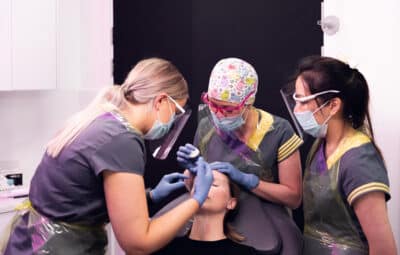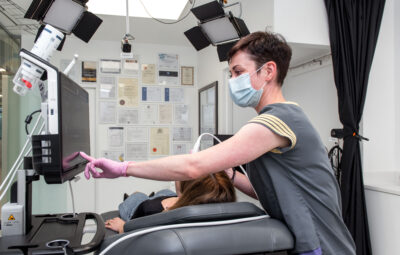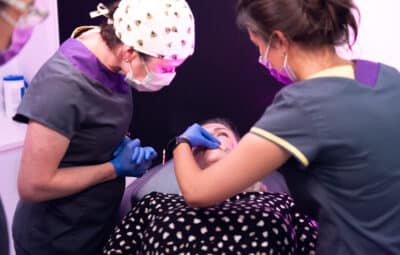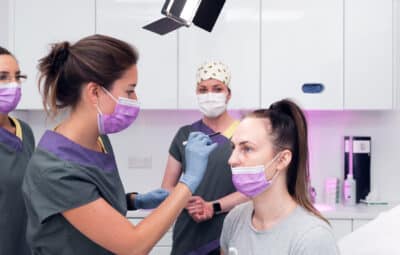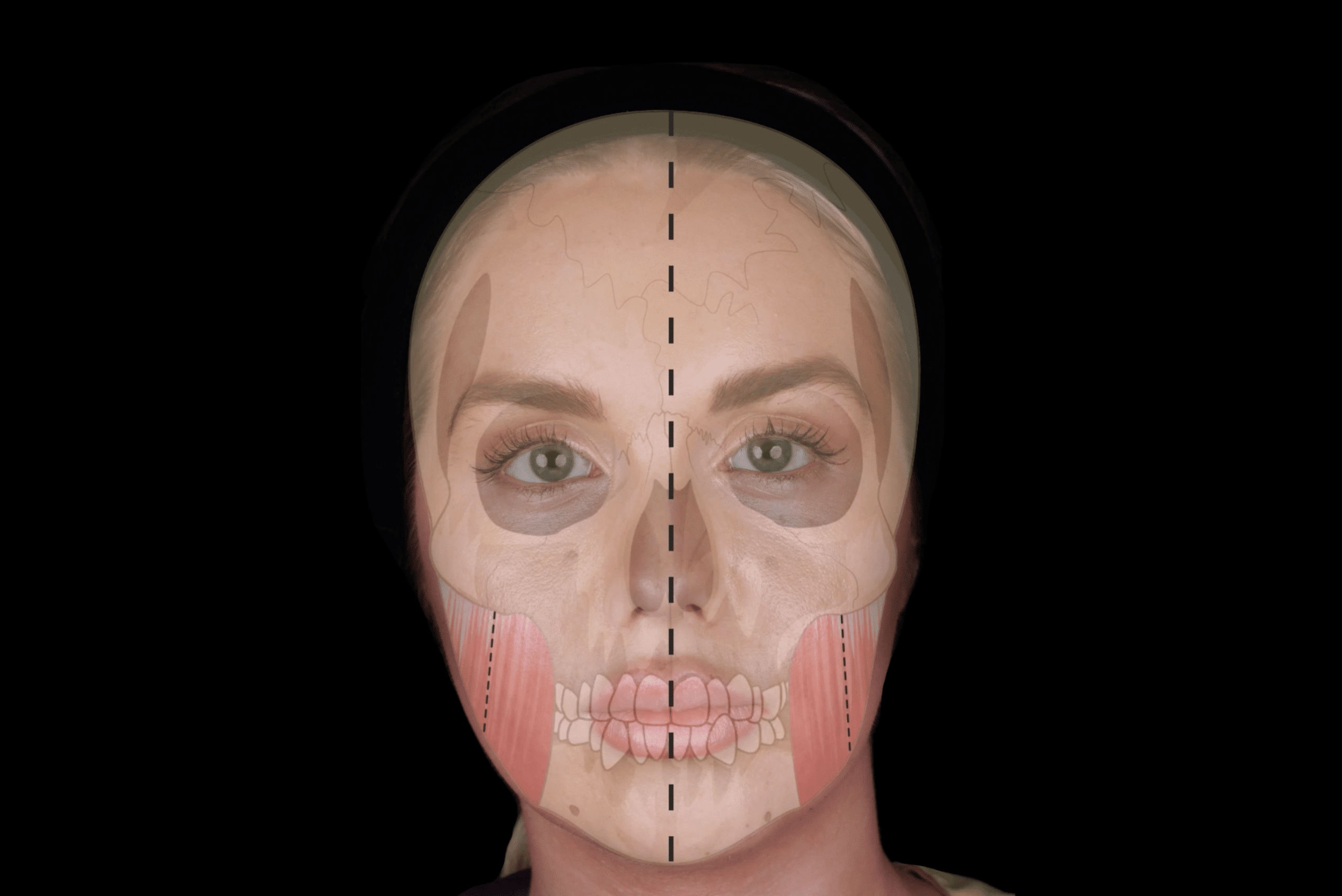
Facial Anatomy in Aesthetics: Why You Should Master It
31 July 2025
In this post:
- Deep anatomical knowledge is essential for safe and effective aesthetic practice, helping injectors avoid complications like vascular occlusion, muscle paralysis, and even blindness.
- Facial anatomy is uniquely complex, with dynamic structures that vary between patients. This makes surface-level memorisation insufficient for truly safe injection.
- Confident injectors are built through a combination of theoretical education and practical, hands-on experience, including tools like facial ultrasound.
- At the Smileworks Aesthetic Training HUB, anatomical understanding is the foundation of every course, empowering practitioners to treat safely, predictably, and ethically.
When patients trust you with their face, they’re placing their confidence in more than just your injection technique. They’re trusting your deep understanding of the intricate network of muscles, vessels, nerves, and tissue planes that make facial expression, communication, and function possible.
However, facial anatomy has unfortunately become one of the most overlooked aspects of aesthetic training. Too many practitioners treat it as a box-ticking exercise. It’s something to temporarily memorise to get a certificate rather than truly understand for a safe practice.
This fundamental misunderstanding of anatomy’s importance is precisely why the UK continues to see highly preventable complications.
At the Smileworks Aesthetic Training HUB, we’ve witnessed firsthand how thorough anatomical knowledge transforms not just treatment outcomes, but injectors’ confidence and patient trust. When you truly understand what lies beneath the skin, every injection becomes purposeful, predictable, and infinitely safer.
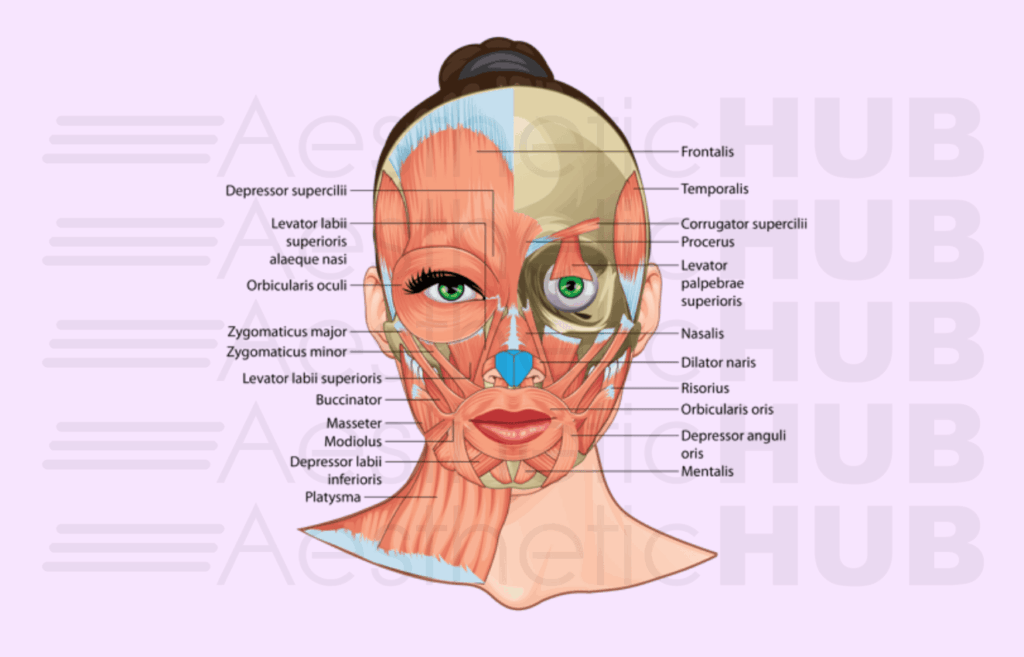
What Makes Facial Anatomy for Aesthetics Different
The face isn’t just another area of the body with muscles and blood vessels. It’s the part of your body that’s responsible for communication, expression, and survival. One wrong injection in the face can negatively impact not just your patient’s appearance, but also their face’s function and ability to form expressions.
Unlike muscles elsewhere in the body that run from bone to bone to facilitate movement, facial muscles primarily run from bone to skin. Their main purpose is to move the skin itself, creating the subtle expressions that allow us to communicate non-verbally.
When you inject into the face, you’re working within a three-dimensional, dynamic system. The tissues move, the muscles contract, and the blood flows through an intricate network of vessels that can vary significantly between patients. Static anatomical diagrams are helpful, but they cannot capture the true complexity of our faces.
This is why mere memorisation of anatomical structures simply is not enough. You need to understand how these structures work together, how they change with age, and how your treatment will affect not just the target area, but the entire facial ecosystem.
The Importance of Patient Safety
Nearly every serious complication in aesthetic medicine can be traced back to inadequate anatomical knowledge. Whether it’s a vascular occlusion leading to tissue necrosis, accidental arterial injection causing filler blindness, or unintended muscle paralysis affecting facial function, these devastating outcomes share a common root: the injector didn’t fully understand what they were working with.
Consider the recent botulism from Botox outbreak in the North East. While counterfeit products were the primary cause, proper anatomical knowledge would have helped the injectors recognise the systemic symptoms earlier and respond appropriately. When you understand how the nervous system works and how botulinum toxin affects muscle function, you’re better equipped to distinguish between normal localised effects and dangerous systemic complications.
The same principle applies to vascular complications. Understanding the course of facial arteries, their anatomical variations, and their connections to critical structures like the retinal artery isn’t just important academic knowledge. It’s the difference between a successful treatment and a medical emergency.
Practitioners with a strong understanding of facial anatomy for aesthetics can anticipate problems before they occur. They know which injection sites carry higher risk, how to modify their technique based on individual patient anatomy, and most importantly, when to stop and reassess rather than proceed with treatment blindly.
Predicting Treatment Outcomes
When you understand the underlying structures beneath the skin, you’ll be able to anticipate how products will distribute, how muscles will respond to neuromodulators, and how the face will age in response to your interventions.
Take dermal filler placement, for example. Knowing the difference between superficial and deep fat compartments doesn’t just help you avoid complications. It allows you to place product strategically for optimal longevity and natural-looking results. Understanding fascial planes helps you predict how filler will spread and integrate with existing tissue.
Similarly, with botulinum toxin treatments, understanding muscle interactions is crucial. When you weaken one muscle, opposing muscles may become more active, potentially creating unintended effects. A good injector will understand these relationships and know how to anticipate and compensate for these changes.
This also extends to patient selection. Not every patient is suitable for every treatment. Just because they ask for a specific treatment doesn’t mean it will work for their specific anatomy. Conducting a proper facial assessment before injection is key to making these decisions. Muscle strength, skin thickness, and vascular anatomy can all vary person to person.
The Psychology of Expertise
There’s another crucial aspect of anatomical mastery that’s often overlooked: the confidence it provides both injector and patient. When you can explain exactly what you’re doing and why, patients feel more comfortable and secure in their decision to choose you as their injector. When you can discuss anatomy knowledgeably and relate it directly to their concerns, you build up a trust that can last a lifetime.
When unexpected situations arise (anatomical variations, atypical responses, or potential complications), you’ll be able to adapt and respond appropriately rather than panic and push forward blindly. If you’re confident in your abilities, your patient will be too.
We’ve seen this countless times at the HUB. Students who initially struggled with confidence transform into assured aesthetic practitioners once they truly grasp facial anatomy. They stop second-guessing every injection and start making informed, deliberate treatment decisions.
Beyond the Textbook
While theory forms an important and necessary foundation, real-world anatomical understanding requires hands-on experience and modern tools. This is why our training goes far beyond theoretical learning.
Facial ultrasound training, for example, has revolutionised how we approach anatomical education. Being able to visualise structures in real time, see anatomical variations between patients, and confirm accurate product placement takes anatomical understanding from theoretical to practical.
Similarly, working with live models during training days allows our delegates to experience firsthand how anatomy varies between individuals, how tissues respond differently, and how theoretical knowledge translates into real-world practice.
This is why we combine rigorous online anatomical education with intensive hands-on training. You need both the theoretical foundation and the practical experience to become a truly competent injector.
The Investment That Pays Dividends
Some injectors view comprehensive anatomical education as an unnecessary expense or time investment. This perspective fundamentally misunderstands the nature of a successful aesthetic practice. Thorough anatomical knowledge isn’t just an additional qualification that’s nice to have; it’s the basic requirement for a safe, effective practice.
Practitioners who invest in truly understanding facial anatomy distinguish themselves in every aspect of their practice. They have fewer complications, more satisfied patients, better treatment outcomes, and the confidence that comes from genuine expertise. They can also set higher fees because patients recognise their superior knowledge and skill.
More importantly, they sleep well at night knowing they’re practising safely and ethically, with the anatomical knowledge and confidence necessary to handle whatever situations arise.

Master Facial Anatomy for Aesthetics at the HUB
At the Smileworks Aesthetic Training HUB, anatomical education isn’t just a single module. It’s the foundation upon which all of our courses are built. For example, our Foundation Botox & Lip Filler course begins with comprehensive anatomical education because you simply cannot inject safely without this knowledge.
It doesn’t stop there. Our Foundation Facial Ultrasound Course and our Advanced Facial Ultrasound Course take anatomical learning to the next level, allowing you to visualise and understand structures in ways that static diagrams never could. When you see anatomy in real time, your understanding transforms from just theory to truly practical.
For those looking for more in-depth anatomical training, we recommend booking a one-to-one mentoring session with Dr MJ. These sessions are 100% customisable, and you’ll receive personalised instruction based on your skill level and goals.
Remember: facial anatomy isn’t just about passing a course or earning a certificate. It’s about building the foundation for a successful, safe, and rewarding career in aesthetic medicine. When you truly understand what lies beneath the surface, every treatment becomes an opportunity to create beautiful, natural results while prioritising patient safety above all else.
Join us at the HUB today. Let’s shape the future of aesthetic medicine together and ensure safe, effective, and transformative results for every patient.
Want to try out our courses before committing? Take advantage of our free trial for a taste of what learning at the HUB is like.
Related blog posts:

